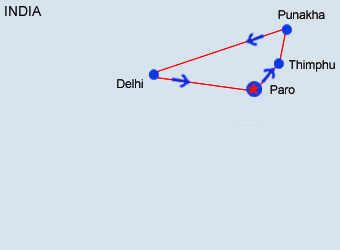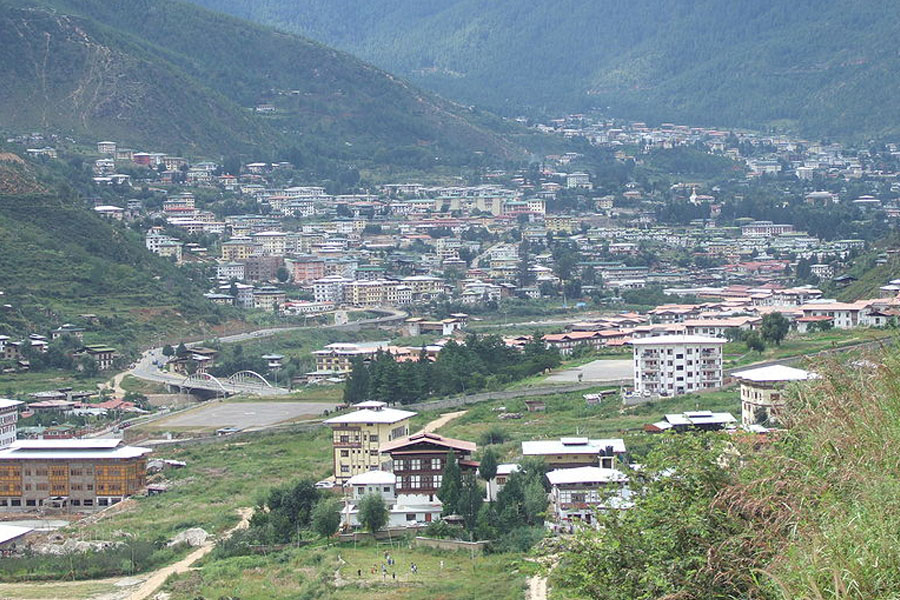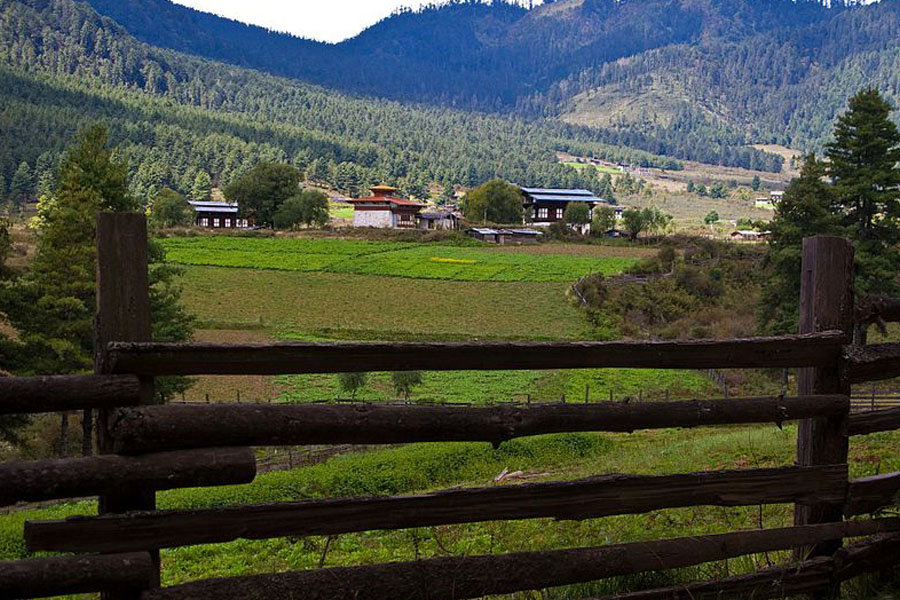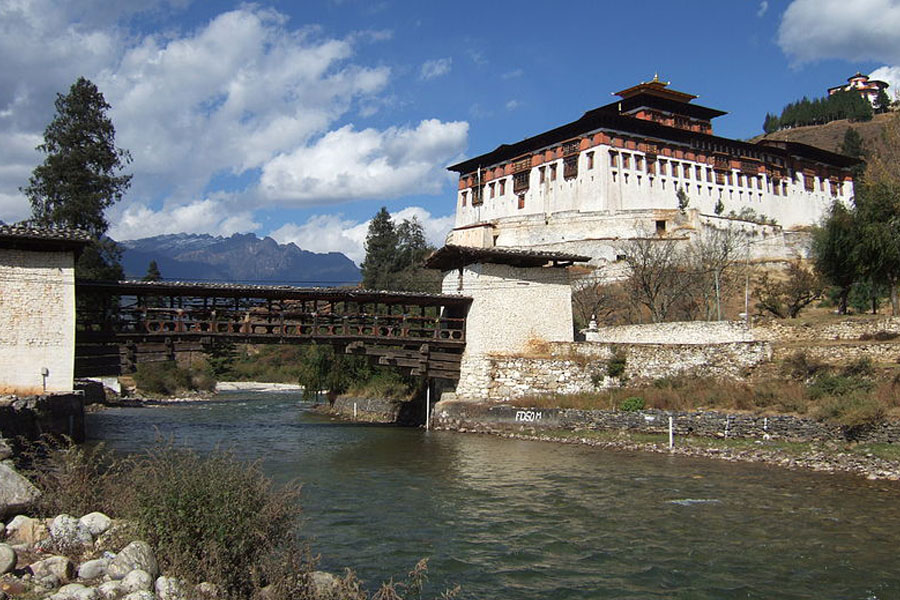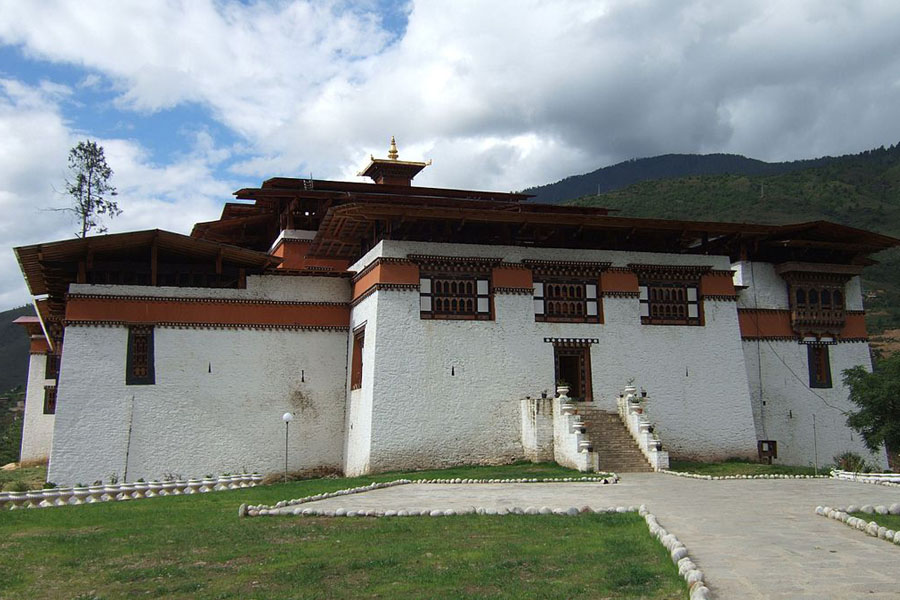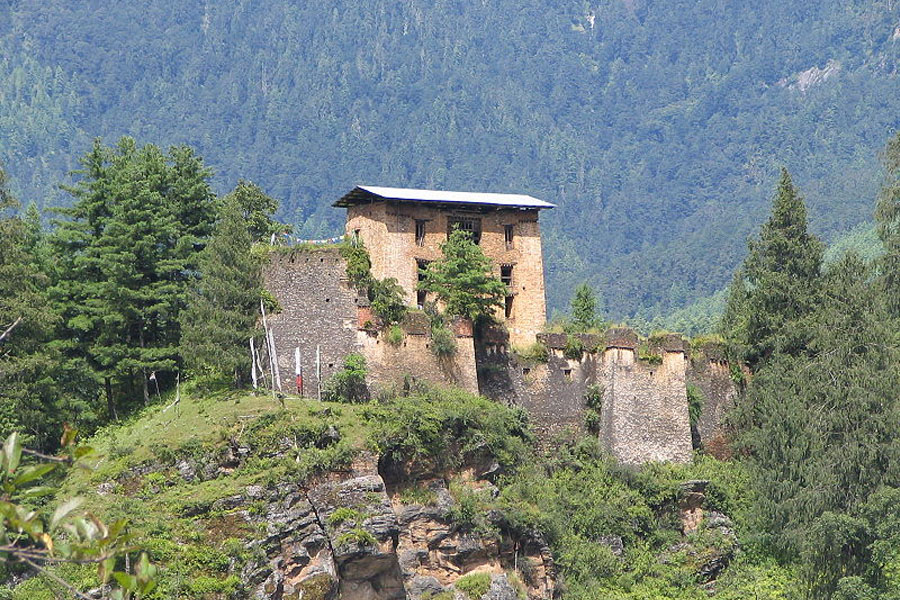Day 01: Arrival in Paro
Meeting on arrival and transfer to THIMPHU., 54 km/2 hours
Afternoon witness Crowing festival (coronation of King)
Day 02 : Thimphu
Sightseeing tour of Thimphu.
Fulll day sightseeing of Thimphu valley, visiting Taschihhodzong; the seat of the Government, Memorial Chorten, the Stupa built in the memory of Bhutan's third King and Handicrafts Emporium displaying rich traditional crafts of the Kingdom, National Library which has fascinating collection of ancient Buddhist manuscripts and texts, the Painting School: famous for traditional thankhas paintings and traditional Medicine Institute where centuries old healing arts still practiced.
Day 03 : Thimphu-Wangdi-Gangtey, 154 km
Drive to Gangtey with a stop in the picturesque village of Wangdue for a visit to the Wangdue Phodrang Dzong and Radak Naktshang, the village temple. Carrying on, the highway follows the scenic Dang Chhu before climbing through forests of bamboo and oak, and just before crossing the Pele La Pass, a small side road splinters off to the hidden Phobjikha Valley. On arrival guests will have time to take lunch at the Gangtey Lodge before visiting the striking 16th century Gangtey Goemba, sitting at the head of the valley, and perhaps strolling through the quaint Gangtey village.
Day 04: Gangtey Valley
Gangtey is one of the most beautiful open valleys in Bhutan. Gangtey is the winter heaven to the rare Black Necked Crane, migrating down from the Tibetan Plateau. On a hillock overlooking the small villages is the Gangtey Monastery.
The surprise of finding such a wide, flat valley without any trees after the hard climb through dense forests is augmented by an impression of vast space, and extremely rare experience in Bhutan where most of the valley's are tightly enclosed.
A few kilometers beyond the Gangtey Monastery, on the valley floor lies the village of Phobjikha. This place is the winter home of black necked cranes that migrate from the arid plains in the north to pass winter winter in milder and lower climate. Phobjikha, at an altitude of 2900 m, and lies on the periphery of the Black Mountain National Park. The valley boasts two beautiful meandering rivers, Nakay Chhu (Chhu Naap-black water) and Gay Chhu (Chhu Karp-white water). According to a local legend, the two rivers actually represent a snake and a boar. The two animals once raced each other with an agreement that if the snake (Nakay Chhu) won, Phobjikha valley would be able to grow rice, but if the boar won, then rice could never be cultivated in the area. The snake lost since it had to meander all the way during its journey. Rice cannot be cultivated in the valley even today.
Gangtey Goempa : Perched on a small hill that rises from the valley floor, the Gangtey Monastery is the only Nyingmapa monastery on the western side of the Black Mountain's and also the biggest Nyingmapa monastery in Bhutan. The Monastery is surrounded by a large village inhabited mainly by the families of the 140 Gomchens who take care of the Monastery.
Day 05 - Gangtey-Punakha, 87 km
Drive to Punakha retracing the route via Wangdi.
Arrival Punakha and check-in at the hotel/Lodge.
Afternoon sightseeing tour.
Punakha served as the capital of Bhutan until and still it is the winter seat of Je Khnep (the chief abbot). Blessed with temperate climate and owing to its natural drainage from Pho Chhu (male) and Mo Chhu (female) rivers, the Punakha valley produces abundant crops and fruits. There are splendid views of the distant Himalayas at Dochula pas (alt. 3,050m) on Thimphu - Punakha road.
Punakha Dzong : Built strategically at the junction of Pho Chhu and Mo Chhu rivers in 1637 by Shabdrung Ngawang Namgyal to serve as the religious and administrative centre of the region, Punakha Dzong has played an important role in Bhutan's history. Damaged by four catastrophic fires and an earthquake, the Dzong has been fully restored by the present King.
Day 06: Punakha-Paro drive, 124 km
Drive to Paro (almost via Thimphu) across Dochula pass (3050 M) which provides a superb view of the highest peaks of Bhutan, such as Gangkar, Puensum, table Mountain, Masakhang etc.
Arrive Paro and check-in at the hotel.
Day 07 : Paro
Sightseeing tour.
After breakfast, drive to Drukgyel Dzong, a ruined fortress where Bhutanese warriors fought Tibetan invaders centuries ago. The snowy dome of sacred Chomolhari, "mountain of goddess" looms directly over the dzong. Along the way, see the 7th century Kyichu Lhakhang, one of the 108 temples built by Tibetan King Songtsen Gampo.
After lunch visit Ta Dzong, originally built as watch tower, now houses National Museum of the Kingdom. It boasts antique thankhas, textile, weapons and armou, household objects and a rich assortment of natural and historic artifacts. Then walk down the train to visit Rinpung Dzong, meaning 'fortress of the heap of jewels" which has a long and fascinating history. Along the wooden galleries lining the courtyard of the Rinpung Dzong are fine wall paintings.
Day 08 : Paro-Delhi flight
Transfer to airport for flight to Delhi
